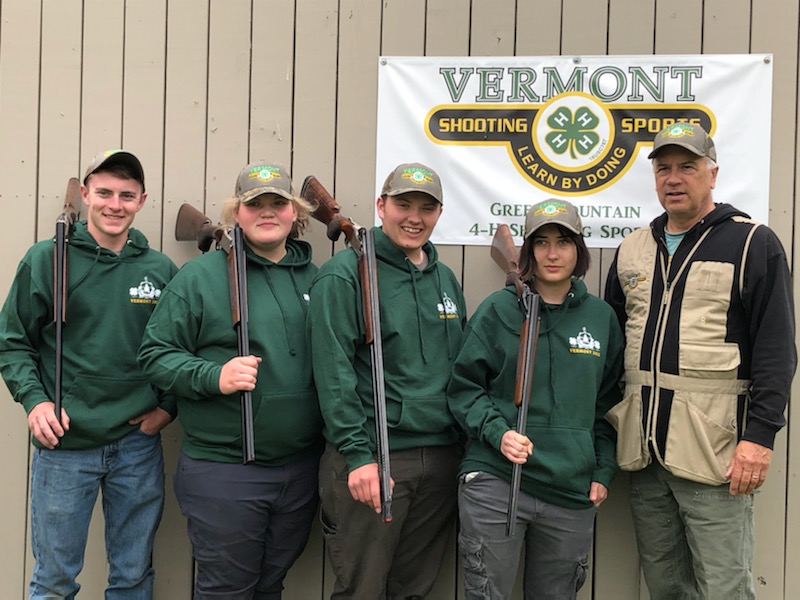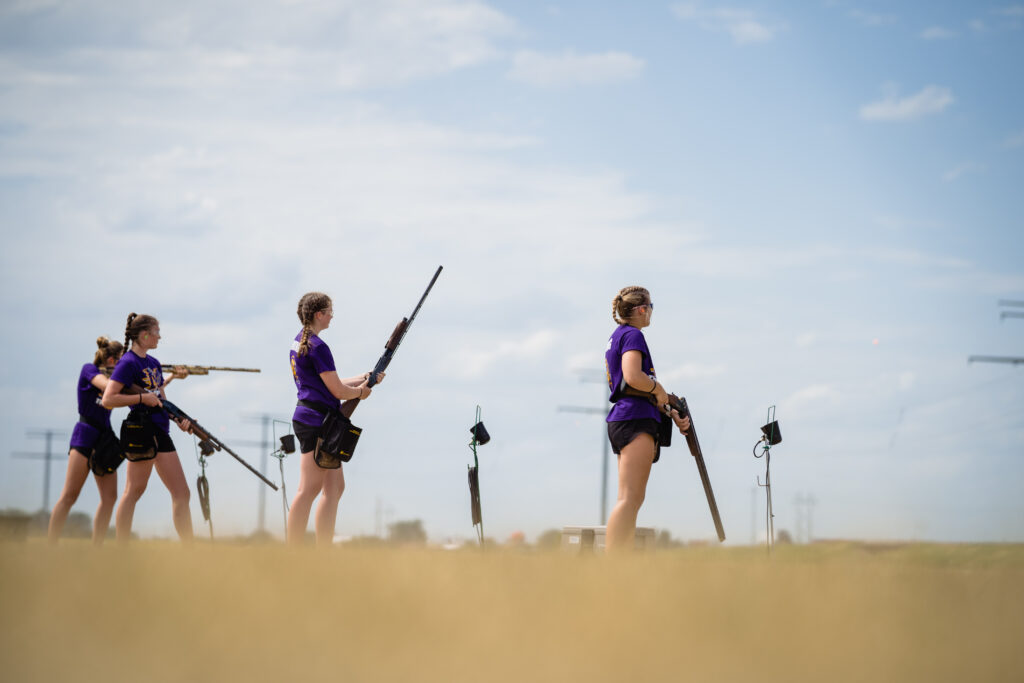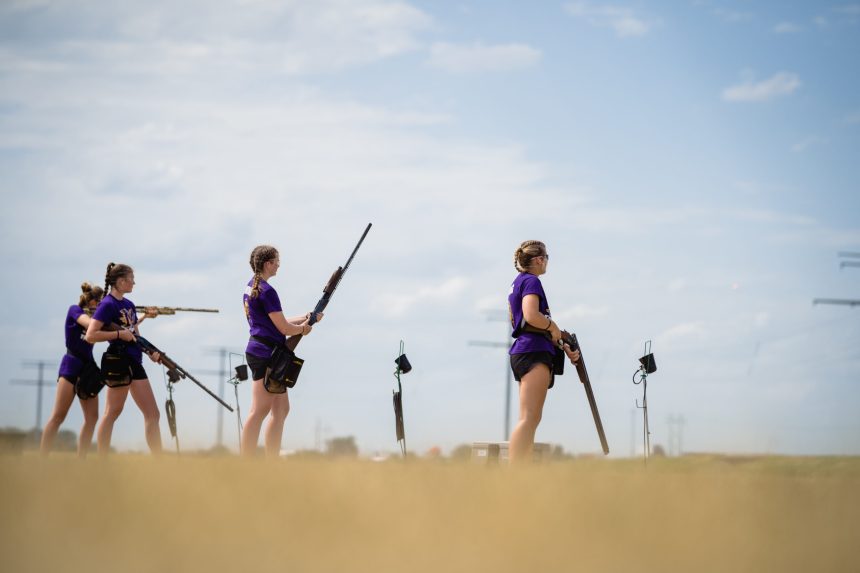By Samantha Pedder
What is the value of a dollar spent or an experienced lived? Sometimes stories and reports quantify and convey the tangible, beneficial value generated when state fish and wildlife agencies put dollars on the ground through the Wildlife Sport Fish Restoration (WSFR) program. Acres of habitat managed, wildlife research projects conducted, species conserved – the list goes on and on of the positive impacts that federal excise tax dollars, generated by purchases of items such as firearms and ammunition, have had to help wildlife thrive through the WSFR program. At times though, the impact these same dollars have on the people who use these managed resources goes unnoted. Hunters, target shooters, anglers, boaters, and wildlife watchers benefit when WSFR dollars are strategically spent, sometimes in unrecognized ways.
Investing for Lasting Impacts for Participants
New target shooters benefit greatly when state fish and wildlife agencies invest in constructing target shooting ranges. Lack of places to target shoot has been identified by target shooters as a barrier to their participation, and with a public range, agencies provide a place where new target shooters may hone their skills in a safe environment. Additional investments to support target shooting programs further the impact too. Agencies have provided support for target shooters by offering training for coaches of high school shotgun team leagues, equipment grants to help teams acquire firearms, and even grants to local clubs to expand their range services to the public.
Over the last decade, with agencies’ support, many youth target shooting leagues have formed and offered hundreds of thousands of youth the chance to learn to target shoot. These leagues continue to grow at rapid rates. In Minnesota alone in 2017, participation in school-sponsored clay target leagues exceeded participation in high school hockey teams – for men and women combined. I have interacted many coaches, athletes, and program managers of these leagues, and they always have one thing in common – an agreement that these programs generate not only target shooters but also create future leaders, conservation ambassadors, and lifelong participants.
Applying League Skills in Life
Jon Zinnel serves as an example of a shooting sports program graduate. As a former 4-H National Shooting Sports ambassador and competitor, Zinnel pursued a degree in environmental science and now serves as the Senior Manager of Conservation and Youth Shooting Sports for Federal Premium, Remington, Hevi-Shot, and CCI Ammunition. His company is one of many that pay the federal excise tax on ammunition sales each quarter, which funds the WSFR grant program, and now his work helps to support conservation and youth shooting sports programs across the country.

“4-H Shooting Sports introduced me to the shooting sports industry and helped me find a career path forward,” Zinnel commented. “Programs such as 4-H and others not only teach athletes to be great shots but also good stewards of the industry and conservation. The skills, discipline, confidence, and ethics instilled in youth during these developmental programs help to carry them forward in life and become a member of the larger conservation and target shooting community.”
Holding to this belief, the brands Jon represents maintain a long history of supporting the growing community of target shooters and conservationists. Federal Ammunition was at the table to help start the 4-H Shooting Sports program back in 1937, and annually these brands offer support to multiple youth shooting sports programs across the country. The ammunition brand’s mission statement embodies their role, stating they set out to “Build Better Ammunition in America to Create Community, Power Defense and Conserve Our Heritage.” As Jon says, our ammo brands “support almost every national conservation and youth shooting sports organization. We recognize the opportunity to give back to these programs, even beyond the excise tax, and we are proud to do our part to support our communities.”

Connecting to Local Communities
Another benefit of the presence of target shooting ranges and supporting educational programs is the impact on the local communities. Creating a connected community of youth, families, and new target shooters is often highlighted as a benefit when people describe shooting sports programs. John Nelson, president of the growing USA Clay Target League, echoed the community tie as well. USA Clay Target League is one of several popular youth shooting sports leagues, with membership across 36 states serving approximately 45,000 students in the last school year. Each team in the League is connected to a school, and students from 6th grade through college participate. All competitors from a school compete on the same team and follow the same rules, allowing all genders and adaptive athletes to compete on the same “playing field.”
“Through the League, we are connecting students with local ranges to target shoot and participate in their communities,” commented Nelson. “38% of our students do not compete in another school sport, and target shooting is for them. This participation is critical as national research has shown that when students are involved in sports and activities through their schools, they do better and are more likely to succeed. By connecting them with the ranges, we set them up for a place to go after the season ends too, so this isn’t just a sport for one season.”

Because of the critical partnerships with local ranges, USA Clay Target League surveys its range partners to identify new opportunities to help their students succeed. In the most recent survey of more than 500 ranges, 86% of the ranges shared that they’ve made some improvements to support the shooting teams. “Whether they are installing new equipment or expanding trap fields, these ranges and communities formed around these teams are working together to support these kids and help to get as many involved as possible,” commented Nelson. “It’s incredible to be a part of and help these students succeed in life.”
Expanding Opportunities in the Future
Confidence, community connections, family engagement – it is clear that youth and families involved in these shooting sports programs benefit immensely. The logical next question is how might the conservation community expand this opportunity to more youth and new target shooters of all ages? Fortunately, both Zinnel and Nelson offered some insights. Based on the range survey conducted by the League of the ranges that made improvements to their facilities, only 25% did so using grant money from their state fish and wildlife agencies. “We are unsure why the number is so low, but we do know that there is an opportunity for increased support with WSFR funds for teams in the future,” commented Nelson. Zinnel echoed, “We’ve noticed more and more that state agencies are increasing their support of target shooting ranges and programs, and we’re thrilled. We’re proud to play our role beyond paying the excise tax to support these programs, but we can’t do it alone. In the future, as agencies continue to build more ranges and offer more support to programs like 4-H and others, we know that we’ll be able to expand the positive impact of these programs to youth and families and collectively grow the community together.”

